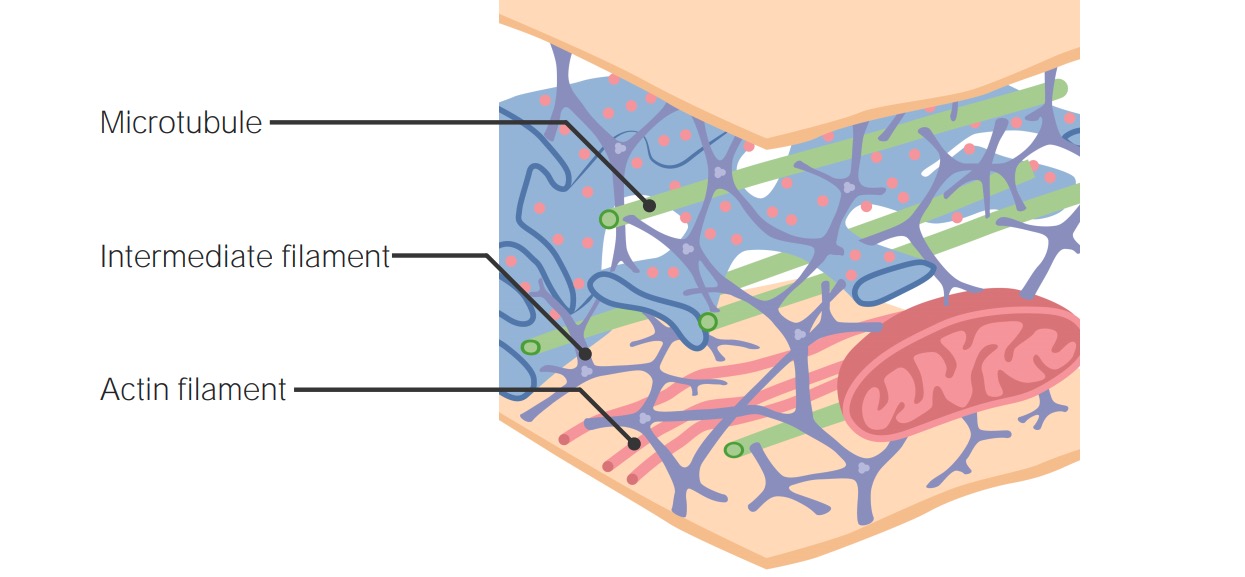Playlist
Show Playlist
Hide Playlist
ATPases
-
Slides GP Membrane Physiology.pdf
-
Download Lecture Overview
00:01 The next one we’re going to go through is our ATPases. 00:04 The prototype that we’re going to use for this is a P-type calcium or a P-type sodium-potassium ATPase or a pump. 00:12 Now, why are these pumps so important? Well, this is important because the last two things we went through, pores and ion channels, needed to have a concentration gradient for there to be any transport across the membrane. 00:27 Here, we are creating the gradient or we are pumping against the gradient. 00:33 So we don’t need to rely on a gradient, we can do it ourselves by using energy to get us across that particular cell membrane. So that’s why this is called active transport. 00:45 And this is used to either establish a gradient or move something against other gradient. 00:53 ATPases can be on any membrane. It can be on a plasma membrane or an intracellular membrane. 01:01 And a good example of an intracellular membrane pump or ATPase is the calcium ATPase on the sarcoplasmic endoplasmic reticulum. 01:14 Now if a pump moves, an unequal number of ions either in or out of the membrane is referred to as electrogenic. 01:23 What electrogenic means is it creates an electrical chemical gradient. 01:28 And this gradient can be used to help in voltage exchanges. 01:35 It's important to know that an ABC transporter is not the same thing as an ATPase. 01:42 This ATP binding casette or ABC transporter needs ATP to undergo hydrolysis but it is not a ATPase. 01:56 A good example of ABC binding transporter is the Cystic Fibrosis Transmembrane Regulator, or also known as the CFTR. 02:09 This CFTR, if ATP binds to an appropriate nucleotide binding domain, will open up the channel. 02:19 And therefore, it really is acting like a ligand type of a channel. Something is activating it. 02:28 But instead of that activation portion being on the outside of the membrane, it's internal or it's being activated from the inside. 02:39 A good picture of the CFTR can be seen over here where you have two nucleotide binding domains. 02:47 ATP can bind in these two domains, undergo hydrolysis which opens up the pore, for in this case chloride to travel through. 02:59 And chloride is gonna travel through based upon its electrochemical gradient. 03:06 They'll determine if it flows through into the cell or they go out of the cell. 03:13 So let's go through that prototype in more detail. 03:15 There's a number of cyclical processes and volunteer and we're gonna take these one by one to explain to you how this process works. 03:26 The first thing we're gonna talk about is to think about the number of different ions that are exchanged. 03:32 So this again is a P-type pump extrudes or pushes out three sodium and brings in two potassium. 03:40 The other things to think about is where this is primarily located. 03:45 Usually this is going to be on the basaolateral side of most epithelial cells. 03:51 And we'll keep talking about epithelial cells throughout this particular course that these cells are usually located along our junction in which we're moving something from one side of that cell, across one membrane, into the cytosol, then across that membrane, on the other side to make move into somewhere like the blood. 04:13 It involves a number of steps, in which here we have eight, and we'll try to animate these for you so you really understand how the sodium-potassium ATPase works. 04:25 Okay, now that we have the basics of the sodium-potassium ATPase down, let's now take each one of those steps in turn. 04:33 So let's first start off with the basic portion of the pump. So we have ATP bound to it. 04:40 We have the outer gate closed and we have nothing in the pump yet. 04:48 We now have sodium that enters into the pump in fact, three sodiums to be precise. 04:56 The next thing that happen is the hydrolysis of ATP. Hydrolysis means we breakdown ATP into an ADP and an inorganic phosphate. 05:06 The inorganic phosphate stays bound. What this also does is close the inner gate. 05:17 Now the outer gate opens through a confirmational change and that allow sodium to leave. 05:27 This then allows the potassium, in fact two of them to be precise, entering into the pump. 05:42 Then inorganic phosphate leaves the pump, closing the outer door. 05:50 And now ATP binds back to the pump which opens up that inner gate, allowing potassium to go into the cell. 06:02 And that sets up the sodium-potassium ATPase pump cycle where you need to have ATP bound broken down, sodium entering, sodium to then exit the cell, potassium to enter the pump, and then finally potassium to enter the cell. 06:20 And it's very important to have that process working correctly to open and close the various gates at the appropriate time. 06:27 It's a great example of a sodium-potassium ATPase P-type pump.
About the Lecture
The lecture ATPases by Thad Wilson, PhD is from the course Membrane Physiology.
Included Quiz Questions
What classification does the Na-K ATPase pump belong to?
- P-type
- V-type
- F-type
- ABC-type
- Passive pore
Which of the following actions is a result of ATP binding in the Na-K ATPase pump?
- Sodium binds to pump
- ATP phosphorylation
- ADP hydrolysis
- Sodium binds potassium
- Potassium binds chloride
What is different about ATPases when compared to ion transport and pores?
- They use energy to create a gradient
- They undergo a conformational shape change
- They are bigger
- They don't produce an electrochemical gradient
- They exchange cations
What is active transport?
- Energy is used to pump a substance across the cell membrane against a gradient
- Energy is used to create a neutral gradient
- Energy is not necessary to create a gradient
- A negative gradient is created
- Ions are transported following their own gradient
Which of the following regarding ATPase is NOT true?
- ATPases are only found on plasma membranes.
- Calcium ATPase on the sarcoplasmic endoplasmic reticulum is an intracellular membrane pump.
- ATPases can be on any membrane.
- ABC transporters use ATP hydrolysis.
- ABC transporter is not the same as ATPase.
What is the end result of the Sodium-Potassium ATPase pump?
- Three Na+ outside the cell and two K+ inside the cell
- Two Na+ outside the cell and two K+ inside the cell
- Three Na+ inside the cell and two K+ outside the cell
- Two Na+ inside the cell and two K+ outside the cell
- Four Na+ inside the cell and two K+ outside the cell
Why is there an unequal number of anions being pumped inside versus outside of the cell?
- To create an electrochemical gradient
- To remove positive charges from the inside of the cell
- To remove negative charges from the outside of the cell
- To restore electrogenic balance
- To facilitate passive entry of water following sodium
Where can the Na/K ATPase pump be found?
- On the basolateral side of the cell membrane
- On the apical side of the cell membrane
- On the basal side of the cell membrane
- At the luminal side of tight junctions
- At the luminal side of gap junctions
What closes the inner gate and opens the outer gate of the Na/K ATPase pump?
- The hydrolysis of ATP
- Inorganic phosphate leaving the pump
- ATP binds to the pump
- Organic phosphate leaving the pump
- ADP binds to the pump
Customer reviews
3,7 of 5 stars
| 5 Stars |
|
1 |
| 4 Stars |
|
0 |
| 3 Stars |
|
2 |
| 2 Stars |
|
0 |
| 1 Star |
|
0 |
I appreciate that the changes were made according to reviews previously posted by students. It helps that the information is staying up-to-date for all users
In the lecture Thad says that ATPase is a V-type pump, but in the test it is a P-Type pump, which is correct. This pump is called a P-type ion pump because the ATP interactions phosphorylates the transport protein and causes a change in its conformation. There should be a review process to ensure accuracy before these lessons are released. Overall a great lecture, but details like this are important ones not to miss. Thanks!
somethings said are not so clear eventhough we can refer books............... In the quiz the na+ k+ atp ase is said to be p type pump..................... but in the lecture it says it is a v type pump........................ i want to know which is right..............................




